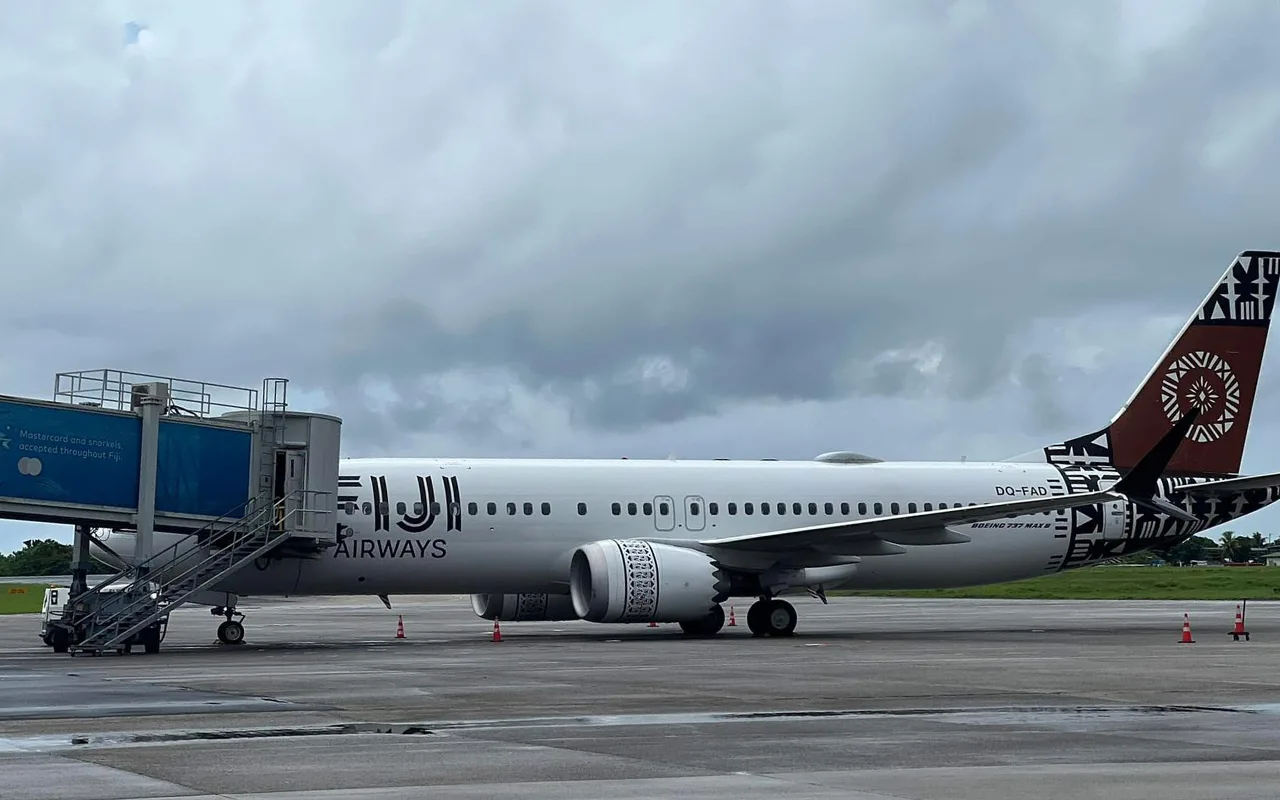Established in 1999, Fiji Airports is a government-owned enterprise with a reputation for providing first-class aviation services across the country. We catch up with Mesake Nawari, CEO, who reflects on a year of tangible growth for the company and its continued focus on expansion, innovation, and sustainability.
THE PACIFIC AVIATION GATEWAY
Since Mesake Nawari assumed the role of CEO of Fiji Airports 18 months ago, the company has continued to grow and develop.
A year on from when we last spoke, important capital projects have resumed across the company’s 15 sites, alongside the replacement of aging assets.
“I’m glad I joined at an exciting and crucial time when changes were needed to further modernise our airports,” Nawari opens.
Fiji Airports’ refreshed perspective for 2025 includes cultivating a new vision, building a dynamic team, developing sustainability, and strengthening diversity and social inclusion.
At the heart of it all, the company’s 25-year Nadi Airport Airside Master Plan (NAAMP), endorsed by the Prime Minister of Fiji, Sitiveni Rabuka, is paving the way forward.
Designed to cater for growing passenger and cargo traffic and aligned with Fiji Airports’ vision to become a world-class aviation hub, NAAMP is set to cost around USD$1 billion and will be one of the biggest infrastructure projects in the country.
Meanwhile, the company’s new 10-year strategic plan, which runs until 2034, will further support this transformational journey, including developments in infrastructure, digitalisation, financial growth, stakeholder and community engagement, and sustainability.
“We are also in the process of rolling out an accompanying three-year business plan across the company,” he reveals.
Having already ordered six new aerobridges to accommodate wide-body aircraft and commenced construction of the new Labasa Airport terminal building, the business plan is well underway.
“It has taken decades to get to this point, and I’m very grateful to the Board of Directors at Fiji Airports for their support in making this investment happen at a critical time,” Nawari adds.
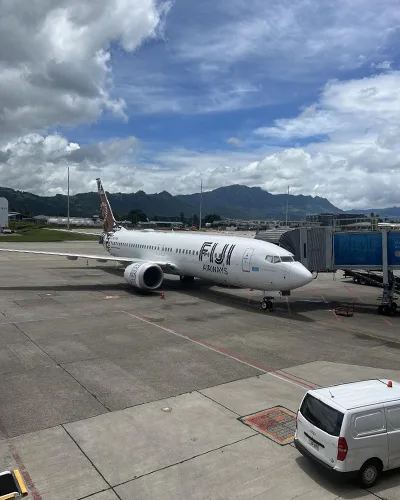

INDUSTRY EVOLUTION
Having undergone remarkable evolution over the past year, Fiji’s aviation landscape today is stronger than ever.
“Recent developments have reinforced our position as the glue of the industry and a central hub for the Pacific region,” Nawari prides.
The past year was a period of celebration and preparation for Fiji Airports as the company marked its 25th anniversary and laid the foundations for significant growth in the sector, driven by a strong recovery from the COVID-19 pandemic, increased demand for commercial air travel, and infrastructure investment.
Elsewhere, passenger traffic has also seen a robust rebound with a steady increase in international arrivals, particularly from key markets like Australia, New Zealand, and the US, testament to Fiji’s reputation as a premier tourist destination in the Blue Pacific region.
In addition, improved air connectivity has been afforded by recent upgrades which have played a crucial role in facilitating the growth of tourism.
“One of the highlights of the past year has been the modernisation, planning, and replacement of our aging assets at Nadi International Airport,” he outlines.
The company has also undertaken projects aimed at enhancing the sustainability of its facilities, including energy-efficient technologies and a waste reduction initiative.
“This aligns with our broader commitment to environmental sustainability and our ambition to lead in green airport practices in the region,” Nawari adds.
COMMITTED TO CONNECTIVITY
Over the past year, Fiji Airports has been working to strengthen its partnerships with existing airlines.
This expansion includes direct flights from new markets with a strong focus on Asia.
“Strengthening our global connectivity ensures Fiji remains a vital gateway for international travellers and enhances business opportunities in both tourism and trade. Nadi International Airport is developing its status as a key transit point,” he shares.
The company is also working closely with airlines to ensure seamless and efficient flight operations, which has further improved on-time performance and operational excellence, contributing to a smoother travel experience.
These enormous infrastructural projects have provided employment opportunities for local people, supporting Fiji Airports’ respect and involvement of the Traditional Owners of the land.
“We are unwavering in our commitment to continue providing employment to Fijians, including Traditional Owners, also offering them business opportunities at the airport,” Nawari informs.
Focused on continuing to build on the foundations it laid in 2024, Fiji Airports is dedicated to further enhancing the efficiency and sustainability of its operations, expanding its global connectivity, and ensuring it is well-positioned to meet future challenges.
In short, the evolution of Fiji’s aviation landscape over the past year has been marked by resilience, innovation, and a deep commitment to passenger safety, security, and services, whilst focus on stakeholders and communities also remains a priority.
“We are excited about the future and ready to continue our role as a key player in the global aviation network,” he says.
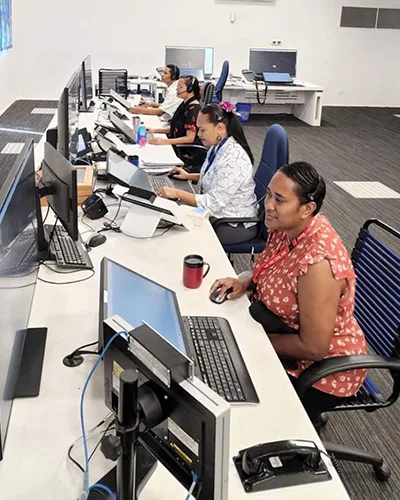
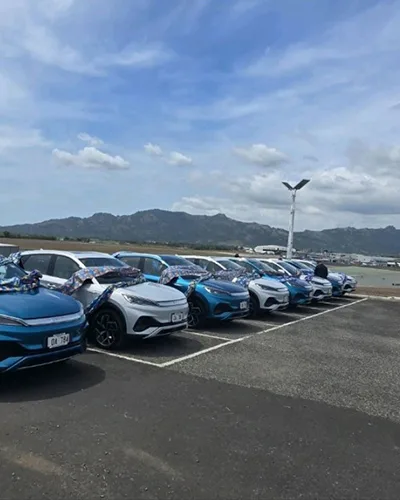
CONTINUED GROWTH
Due to the number of flights, passengers, and related services rising sharply over the past year, Fiji Airports has grown its staff base to more than 500 across Nadi and Nausori International Airports and its 13 domestic airports.
“We needed to fill roles and positions that augur well with the various plans we are launching and teams we are developing,” Nawari details.
This includes Fiji Airports’ new Projects Management Unit, which oversees the roll-out of master plans and major projects across all airports.
As part of the team, it now has a Gender Equality, Diversity, and Social Inclusion (GEDSI) Officer and a Planning Monitoring Evaluation Manager – a first for Fiji Airports as it seeks to cultivate equality amongst staff.
“We also have a Sustainability Officer who drives programmes that aim to reduce the carbon footprint across our airport facilities, working closely with our newly formed Renewable Energy Special Projects team.”
In addition, the company’s Airport Bula Champions, nine of which are based at Nadi International Airport, provide a seamless and unique Bula and Fijian experience for those arriving or departing.
Meanwhile, the number of tenants and licensees at the airport has grown significantly, with an increase in airport lounges sponsored by hotel brands transforming the appearance of the arrivals concourse.
“We are also seeing an increase in demand for transport services, with tour companies increasingly applying for office and parking spaces,” he adds.
OPERATIONAL IMPROVEMENTS
In terms of improvements to operational efficiencies, Fiji Airports has constructed new gates, apron areas, and aerobridges in recent months, alongside an upcoming state-of-the-art domestic terminal and upgrades to cargo facilities, baggage handling, and biometric and check-in systems.
Meanwhile, Fiji Airports’ new Aurora Air Traffic Management (ATM) system integrates oceanic, terminal area, and tower control capabilities in a single system, providing air traffic controllers with the latest technology including electronic flight strips, advanced flight and surveillance data processing, and training capabilities.
The new technology continues to enhance fuel efficiency by offering direct routing and continuous climb/descent operations and overall airspace efficiency.
Featuring optimal fuel-efficient routing in the procedural environment with reduced separation minima for airspace efficiency, it gives controllers the tools they need to provide a five nautical mile separation using Automatic Dependent Surveillance-Broadcast (ADS-B)-based surveillance.
“Fiji Airports operates a single, integrated system for oceanic, en route, approach, and tower control operations that enables it to provide the most efficient service possible to airlines,” Nawari informs us.
“We are proud to be one of the first countries in the world to transition from procedural control to ADS-B without prior radar experience.”
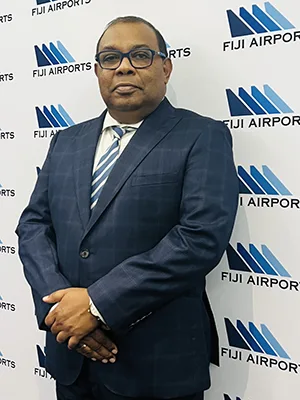
2025 UPGRADE PLANS
Fiji Airports’ upgrade plans for 2025 are anticipated to significantly enhance the passenger experience and support the growing demand for air travel in the country.
Focusing on several key areas, upgrades include the development of a state-of-the-art transit hotel which will provide guests with more comfortable and convenient accommodation options.
“Located within the airport complex, the hotel will offer travellers a place to rest, refresh, and relax between flights,” Nawari divulges.
It will feature modern amenities, high-quality service, and easy access to the terminals, making it a perfect solution for transit and business travellers.
To better cater to both passengers and the local community, the company is also planning to develop retail services and commercial facilities beside the transit hotel, including a range of shops, dining options, and services to elevate the shopping and leisure experience.
“We are also expanding our parking facilities to accommodate the growing number of vehicles,” he adds.
With more flights, passengers, and visitors expected in the coming years, this expansion will ensure travellers can park their vehicles easily and safely, with Fiji Airports set to introduce more spaces for long and short-term parking as well as improved traffic flow infrastructure and accessibility features for passengers with special needs.
Other ongoing works include a new multi-level car park, upgrades to navigation and surveillance systems, improvements to aviation fire and rescue service facilities, the development of the Regional Aviation Academy, and the modernisation of infrastructure at all airports.
“This comprehensive upgrade plan is all about making improvements to meet future demand whilst delivering a world-class experience for both passengers and visitors.”
The projects will also create significant economic benefits, from job creation to increased tourism and business opportunities.
“We’re proud to be part of the continued growth of Fiji as a key hub in the Pacific region, and these upgrades will help solidify our position as a leading international airport destination,” Nawari surmises.
THINKING AHEAD
Going forwards, Fiji Airports’ work to upgrade its government-owned airports continues.
For example, the construction of the new Labasa Airport terminal building began earlier this year and is expected to be completed by mid-2026, whilst work on the landside master plan for Nadi and Nausori International Airports has also commenced.
Maintaining safety and security across its facilities likewise remains a top priority for Fiji Airports, and the company has seen significant advancements in this area.
Over the past year, it has focused on upgrading security systems and training personnel to meet evolving global standards.
“We have also ensured that we comply with all international safety protocols to maintain the highest levels of passenger confidence,” Nawari tells us.
Moreover, Fiji Airports remains committed to supporting its stakeholders and the local communities that its airports serve.
Having strengthened its corporate social responsibility (CSR) initiatives, including supporting local businesses, promoting cultural tourism, and investing in the local workforce through job creation and training programmes, this commitment is notable.
“Our airports serve as a gateway not only for international visitors but also the people of Fiji, and we are dedicated to being a positive force in the communities where we operate,” he passionately concludes.
FIJI AIRPORTS PARTNER




